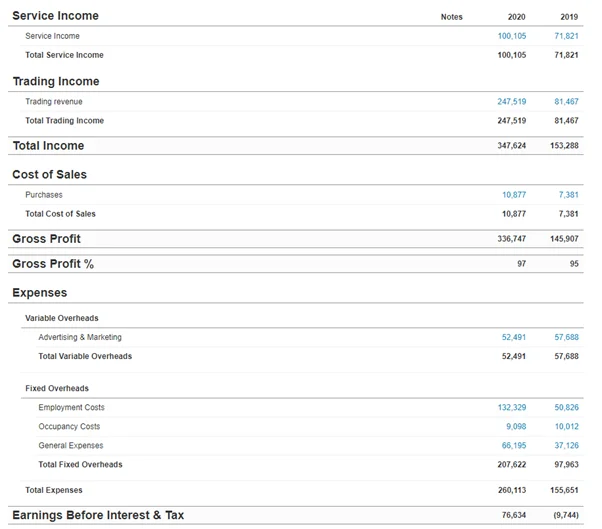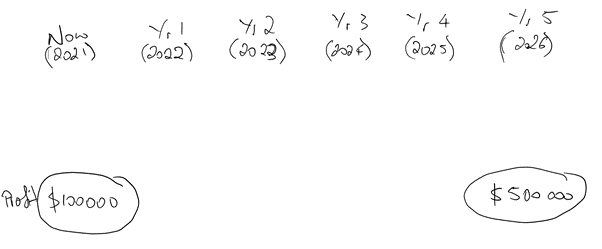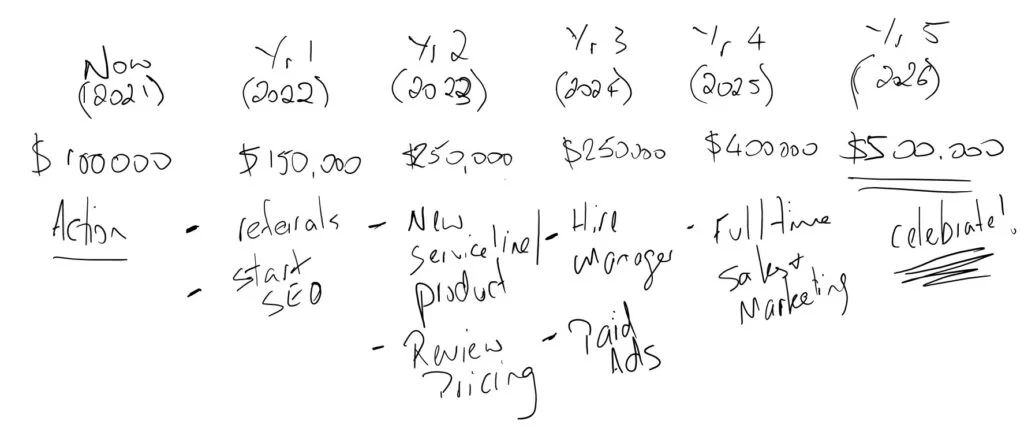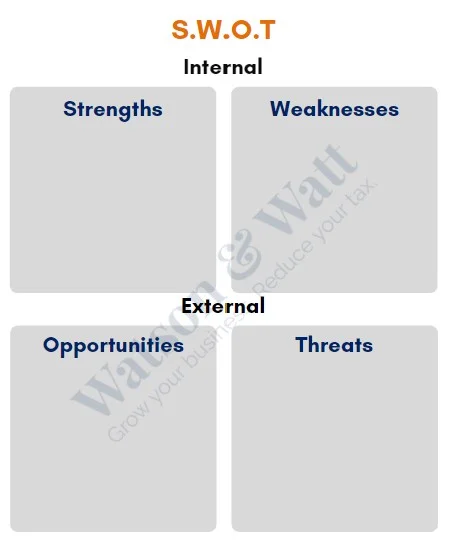Where are you?
When running a small business, the most correct answer can be “everywhere”. I get it. I’m not immune to it either.
So sometimes it’s important to pull over, put the hazards on it and take a look at the Refidex.
Because if you don’t know where you are, how do you know if a) you’re still on track to get to your destination and b) the route you’re taking is still the one you want to take?
In a previous article I talked about how goal setting is useless unless you’re willing to do something about it. But taking off for your destination without considering where you’re starting from can mean doubling back, and several arguments with your significant better, while the kids are moaning for Happy Meals in the backseat.
So before you go taking off, work out exactly where you are, and then plan the route to get to your destination (goal).
Here’s a good time for an example;
Let’s say your goal is to grow the business. You’re aiming for profit of $500k in 5 years.
So before we can work out how achievable that is, or what actions you need to take you need to have a look at where you are now.
Related Content
Step 1. Go to your accounting program,
reports -> Profit and Loss -> Set the dates for the last 12 months. Go.
It’ll look something like this;

See that number down the bottom.
That’s the profit number. You’re trying to get that to $500k in 5 years.
Step 2.
Get a piece of paper, whiteboard or computer screen, go landscape mode, put the years at the top of the page. Then put in your 5 year goal, and your current profit. Like this one;

Now you have a big gap in the middle.
This is where your strategy comes in. How do you choose to go from now to there?
To get you started, you need to set some more goals, for the years, 1, 2, 3, 4 and then work backwards to develop a plan to achieve those goals.
It’s important to note, that profit growth is not always linear.
You may need to make less money in year 3 than you do in year 1 or 2, if you need to make an investment in year 3, that will significantly increase profit in years 4 and 5 – like hiring a manager, embarking on a significant advertising/marketing campaign that has a long lead time etc.

Of course profit is just the starting point. You need to model what the sales, and expenses are also going to look like, and then down to your cash flow to see if all of this is achievable and whether you can fund this yourself or will need a bank or investor to come on board.
So the above is all well and good where there are some hard numbers to work with. But you can’t run a profit and loss statement on qualitative attributes. i.e If one of your goals is to be a better spouse, or better employer. Xero won’t give you a report for that. So how can you tell where you are starting from?
SWOT
Cue vomits.
What the world needs now is not another SWAT.
I’ve done them, you’ve done them. They all amount to nothing if you give it lip service. The point of a SWAT isn’t just filling in the boxes in the business plan template so the bank will give you finance or so you can pass that uni subject.

The point is to actually consider where you are right now, what you have at your disposal to move forward, and what things could blindside you or get in your way. With this knowledge – and continual review and reference to your strategy, the SWAT moves from a 2 x 2 ad nausem to practical working tool.
Like James Clear says in his book Atomic Habits

“Once we realize our strengths, we know where to spend our time and energy. We know which types of opportunities to look for and which types of challenges to avoid. The better we understand our nature, the better our strategy can be.”
James Clear
This is where SWAT is powerful.
Stop filling in empty boxes, and start thinking about where you are and what is coming so you can work out the best way* to your destination.
*the “best way” is relative, it may be the fastest, the slowest, the way with least risk, or any combination. What is best for you is dependent on YOU.
You May Also Like
The next way to assess where you currently are is to have a look at your business model.
In general there are 3 mutually exclusive business models; operational excellence (think Amazon), Product Leadership (think Apple), Customer intimacy (think Watson & Watt).
This discipline is chosen to provide products/services that push the performance boundaries. The value proposition to customers is an offer of the BEST product.
This discipline is chosen to provide not one off transactions, but to cultivate relationships and satisfying unique needs. Needs which often can only be recognised because of the close relationship and intimate knowledge of the customer. The value proposition to customers is the best solution for them – and all the support needed to achieve optimum results from the product/service they buy.
So I want you to consider who your target market is, and what value you provide them. From there you can work out whether your business activities are in alignment with providing this value.
If you want to be operationally excellent, like Amazon is. Every part of your business needs to be working towards this end. You can’t be operationally excellent to deliver lowest total cost if your deliveries take 6 months, or your website requires so many clicks to buy something people just give up.
Likewise, if you want to be a product leader, and continually innovating year after year and bringing out things no one has seen before, then a hierarchical management structure emphasising timesheets and checklists isn’t going to allow creative people to dream up products and services which have never existed before.
So look at your target market, the value you want to provide them, then assess if your business activities support that value. Do you have the key capabilities and resources to deliver this value? Do your supply chain, team structure, culture, and marketing all work together to support each other or is something out of alignment. If you’re a high end consultancy but your website looks cheap, like you tried to do it yourself on WIX it’s not going to work. You need everything to be working together.
By now you should be wanting to have a good hard look at yourself, and your business and working out exactly where you are starting from. This gives you the base to work from and plan out how you are going to build your strategy to get where you want to go. So before you take off in a direction, take the time, and have a look at where you are and which way you want to take to your destination.
If you need a hand or would like someone from the outside to take a look, check out our business consulting service.
